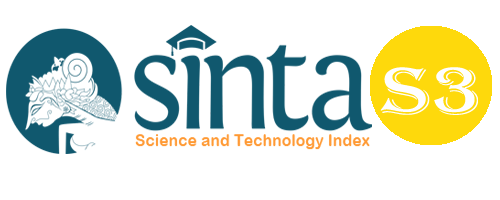Innovation of Government Research and Development Institution Based on Knowledge Management and Information Technology (Case Study on the Government Policy-Making Research and Development Institution)
Abstract
This study investigates and analyzes knowledge-management-based innovation in developing knowledge sharing and absorbing and the role of Information-Technology-based innovation in supporting knowledge management. It is now a demand that institutions prioritize on creating innovation. Organizations that are able to compete can learn and be creative, which is only possible if the knowledge sharing within the institution is carried out properly. This is also the case for R&D institutions that must make innova-tions based on knowledge management and information technology. This is a single case study qualitative analysis. Based on criteria, four in-formants were selected as sources. They were interviewed guided by a list of open-ended questions. The results of this case study provide information on the aspects that are needed to support innovation in government R&D institutions. They also fill the gap in research on knowledge management. Inovation based on knowledge management processes in developing activ-ities to share and absorb knowledge in government R&D institutions has been running and has produced several innovations. IT has been utilized to share and absorb knowledge and it is a requirement for a functional official researcher, but there is still limited availability of computers.
Keywords
Full Text:
PDFReferences
Affandi, A. (2009). Peran Knowledge Management Dalam Menciptakan Keunggulan Bersaing Berkelanjutan (Sustainable Competitive Advantage) Pada Institusi Pendidikan Tinggi. Unpublished. Orasi Ilmiah Jabatan Guru Besar Fakultas Ekonomi. Universitas Pasudan.
Barney, J. B. (1996). The resource-based theory of the firm. Organization Science, 7(5), 469–469. https://doi.org/10.1287/orsc.7.5.469
Cohen, W. M., & Levinthal, D. A. (1990). Absorptive Capacity: A new perspective on learning and innovation. Administrative Science Quarterly, 35(1), 128–152. https://doi.org/10.2307/2393553
Elita, R. F. M. (2005). Kajian Tentang Manajemen Pengetahuan. Universitas Padjadjaran. https://pustaka.unpad.ac.id/wp-content/uploads/2009/01/kajian_tentang_manajemen_pengetahuan.pdf
International Monetary Fund. (2017). World Economic Outlook Update. https://www.imf.org/-/media/Files/Publications/WEO/2017/April/pdf/text/ashx
Kucza, T. (2001). Knowledge Management Process Model. VTT Technical Research Centre of Finland. VTT Publication No. 455. http://www.vtt.fi/inf/pdf/publications/2001/P455.pdf
Nonaka, I., & Takeuchi, H. (1995). The Knowledge-Creating Company. Oxford University Press.
Njoka, J.N., et al. (2020). Analysis of Challenges Facing ICT integration in Managing Public Secondary Schools: A Comparative Study of Day and Boarding Secondary Schools in the South Rift Region, Kenya. Budapest International Research and Critics Institute-Journal (BIRCI-Journal). P. 58-66.
Sitanggang, S.N., et al. (2020). Analysis ofthe Influence ofManagerial Ownership, Audit Quality and Audit Committee on Income Management (Study on Manufacturing Companies in the Consumer Goods Sector Listed on the Indonesia Stock Exchange 2014-2018). Budapest International Research and Critics Institute-Journal (BIRCI-Journal). P. 2521-2533.
Wescott, C. G. (2005). E-government in the Asia-Pacific region: Progress and Challenges. Systemics, Cybernetics, and Informaics, 3(6), 37–42. http://www.researchgate.net/publication/265618189-E-Government_in_the_Asia-Pacific_Region_Progress_and_Challenges
Zahra, S. A., & George, G. (2002). Absorptive Capacity: A review, reconceptualization, and extension. The Academy of Management Review, 27(2), 185–203. https://doi.org/10.2307/4134351
Zhou, A. Z., & Fink, D. (2003). Knowledge management and intellectual capital: An empirical examination on current practice in Australia. Knowledge Management Research & Practice, 1(2), 86–94. https://doi.org/10.1057/palgrave.kmrp.8500009
DOI: https://doi.org/10.33258/birci.v4i3.2211
Article Metrics
Abstract view : 122 timesPDF - 69 times
Refbacks
- There are currently no refbacks.

This work is licensed under a Creative Commons Attribution-ShareAlike 4.0 International License.

This work is licensed under a Creative Commons Attribution-ShareAlike 4.0 International License.

_.gif)

















_.gif)



